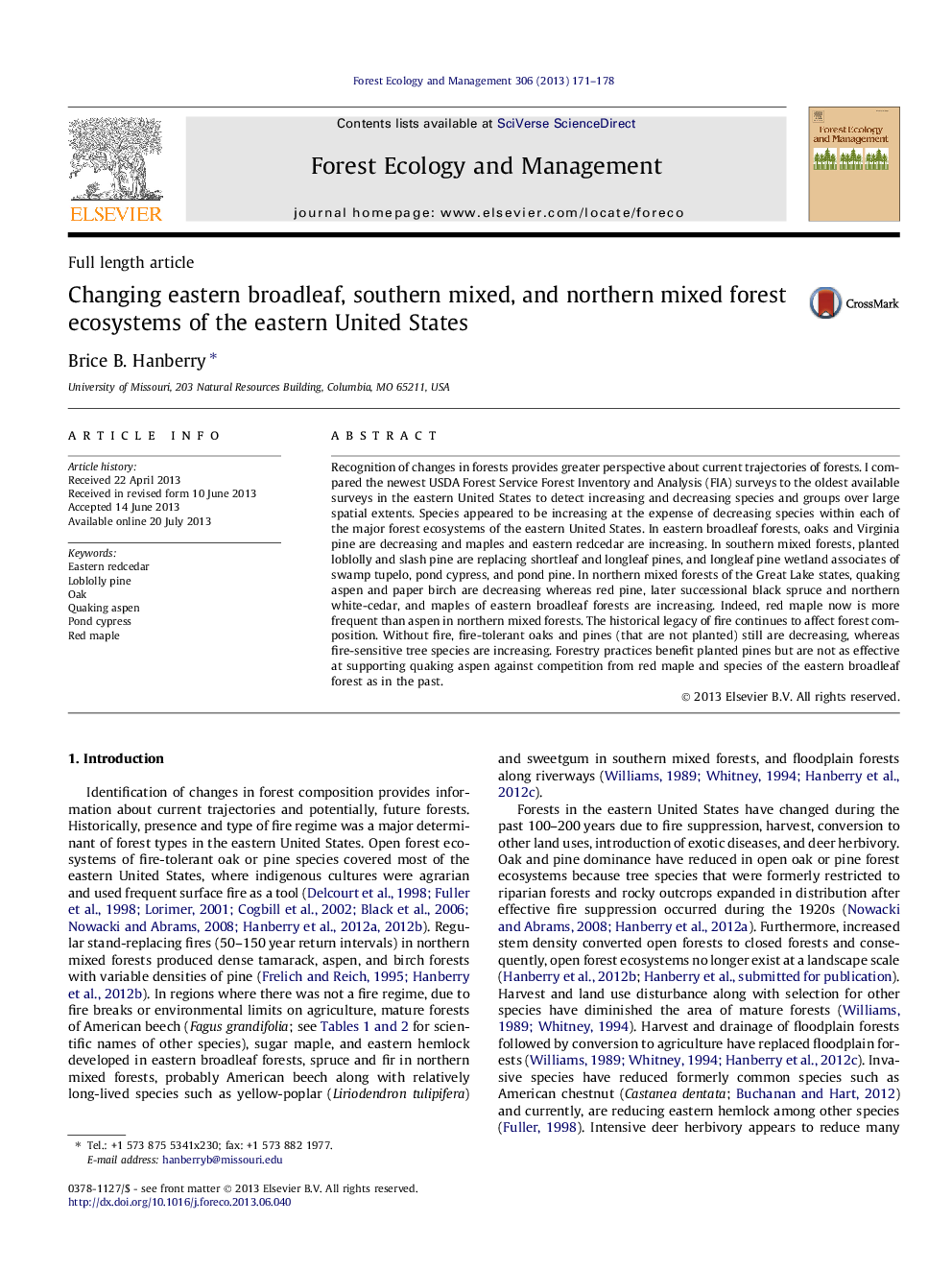| Article ID | Journal | Published Year | Pages | File Type |
|---|---|---|---|---|
| 6544146 | Forest Ecology and Management | 2013 | 8 Pages |
Abstract
Recognition of changes in forests provides greater perspective about current trajectories of forests. I compared the newest USDA Forest Service Forest Inventory and Analysis (FIA) surveys to the oldest available surveys in the eastern United States to detect increasing and decreasing species and groups over large spatial extents. Species appeared to be increasing at the expense of decreasing species within each of the major forest ecosystems of the eastern United States. In eastern broadleaf forests, oaks and Virginia pine are decreasing and maples and eastern redcedar are increasing. In southern mixed forests, planted loblolly and slash pine are replacing shortleaf and longleaf pines, and longleaf pine wetland associates of swamp tupelo, pond cypress, and pond pine. In northern mixed forests of the Great Lake states, quaking aspen and paper birch are decreasing whereas red pine, later successional black spruce and northern white-cedar, and maples of eastern broadleaf forests are increasing. Indeed, red maple now is more frequent than aspen in northern mixed forests. The historical legacy of fire continues to affect forest composition. Without fire, fire-tolerant oaks and pines (that are not planted) still are decreasing, whereas fire-sensitive tree species are increasing. Forestry practices benefit planted pines but are not as effective at supporting quaking aspen against competition from red maple and species of the eastern broadleaf forest as in the past.
Related Topics
Life Sciences
Agricultural and Biological Sciences
Ecology, Evolution, Behavior and Systematics
Authors
Brice B. Hanberry,
